Key takeaways:
- Healthcare education is essential for developing skilled professionals in emergency response, emphasizing the integration of theoretical knowledge with practical experience.
- Paramedics play a critical role as first responders, providing immediate care and facilitating communication between patients and hospitals.
- Becoming a paramedic involves completing a high school diploma, pursuing relevant education, gaining hands-on experience, and passing a national certification exam.
- Practical experience is vital for effective emergency care, revealing the complexities of patient interactions and decision-making in real-life situations.
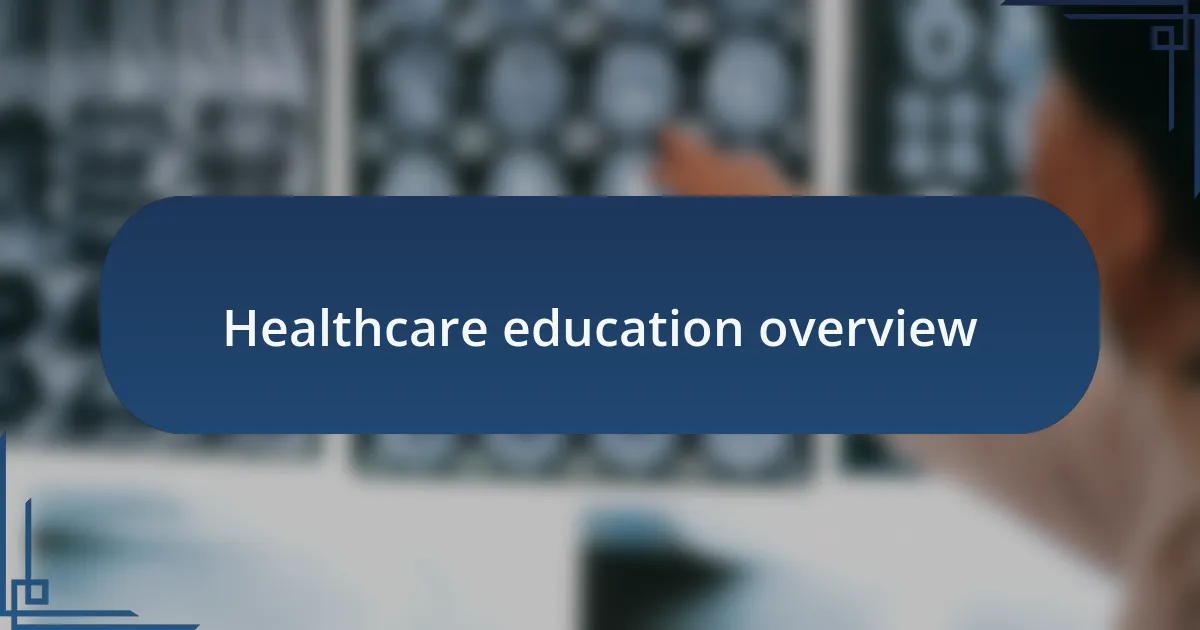
Healthcare education overview
Healthcare education serves as the cornerstone of an effective healthcare system, shaping the professionals responsible for patient care. Through rigorous training programs, aspiring paramedics, nurses, and doctors gain the critical skills necessary to respond to emergencies. Think about it: without proper education, would anyone feel confident enough to care for a loved one in crisis?
Throughout my own journey, the blend of theory and hands-on practice in healthcare education stood out to me. I still remember my first day in clinical training, filled with both excitement and anxiety as I balanced knowledge from textbooks with real-life applications. That experience emphasized how vital it is for healthcare education to bridge the gap between classroom learning and practical experience.
As I engage with future paramedics, I often wonder how each person’s story shapes their path in healthcare. Every student brings unique perspectives and motivations, which adds richness to the educational landscape. This diversity not only enhances the learning experience but also better prepares them for the complex, multifaceted nature of patient care in challenging environments.
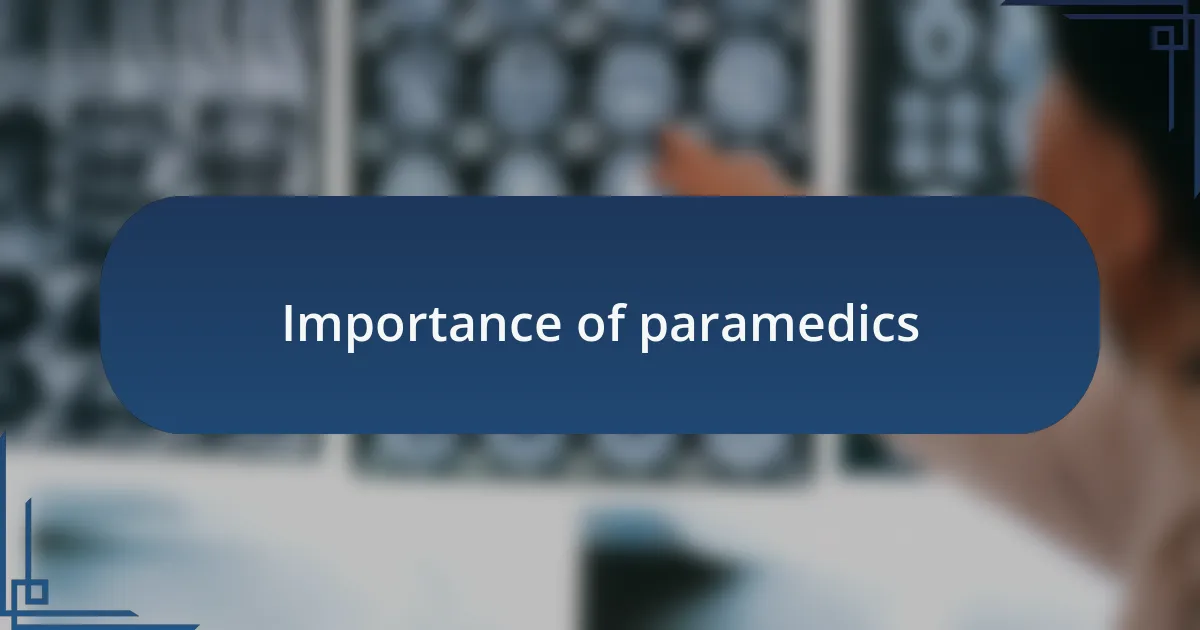
Importance of paramedics
The role of paramedics is pivotal in emergency healthcare; they are often the first responders on the scene, providing critical care before patients even reach the hospital. I vividly recall how the skilled intervention of a paramedic during a family emergency saved my loved one’s life. It made me realize how their swift actions and clinical knowledge can create a lifeline in moments of panic and adversity.
In my experience, the importance of paramedics extends beyond immediate medical assistance. They serve as vital communicators between the patient and the hospital, ensuring that vital information is conveyed during transport. I remember watching a paramedic calmly explain a patient’s condition to the emergency staff, demonstrating how every detail shared can significantly impact the patient’s care. Isn’t it amazing how such seamless communication can make a difference in outcomes?
Moreover, paramedics not only respond to emergencies but also educate the community about prevention and preparedness. They engage in outreach, teaching basic life support and first-aid techniques that empower everyday individuals to act in crises. Reflecting on my training, I found these community interactions rewarding, knowing that by sharing knowledge, paramedics extend their influence beyond emergency calls, instilling confidence in people to help themselves and others when it matters most.
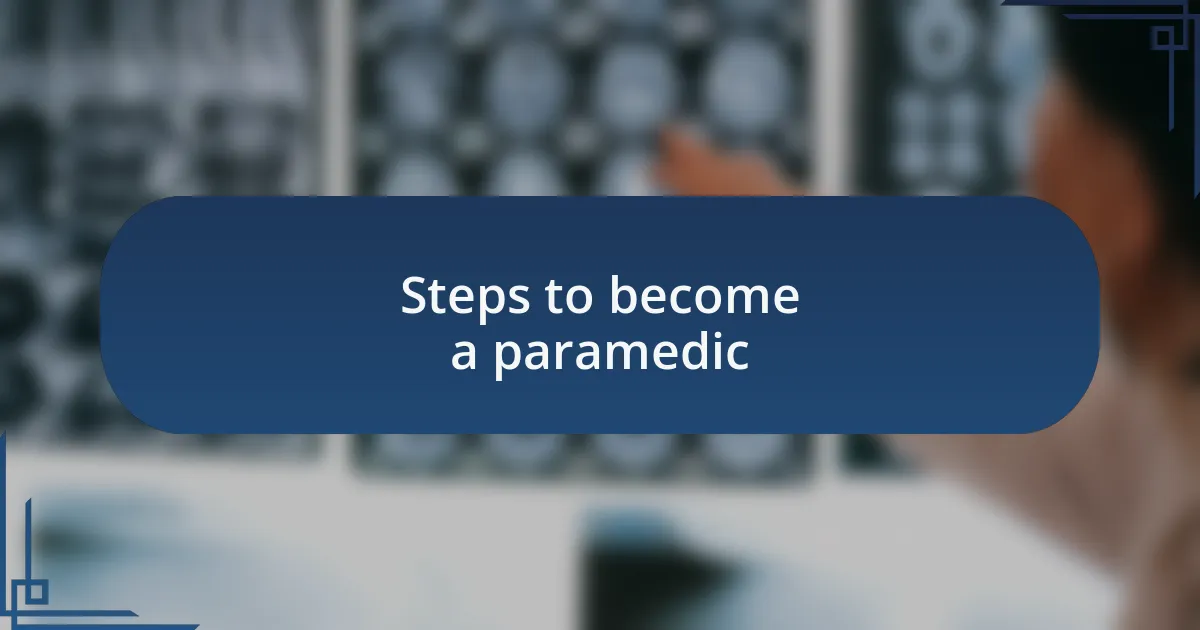
Steps to become a paramedic
To become a paramedic, the journey typically begins with obtaining a high school diploma or equivalent. After that, pursuing post-secondary education in emergency medical services is crucial. I still remember poring over textbooks filled with anatomy and patient care techniques, realizing how every chapter brought me closer to making a tangible difference in someone’s life.
Following the educational phase, it’s essential to gain experience through hands-on training. Completing an accredited paramedic program often involves clinical rotations and field internships. I can recall the adrenaline rush I felt during my first ride-along, where every siren and traffic light became part of an intense learning experience, solidifying my commitment to this path.
Lastly, passing the national certification exam is a non-negotiable step. This requirement not only tests your knowledge but also reflects your readiness to face real-world challenges. It strikes me how this rigorous process aims to ensure that only the most prepared individuals serve on the front lines of emergency care. What better way to enter such a noble profession than with a solid foundation of knowledge and confidence?
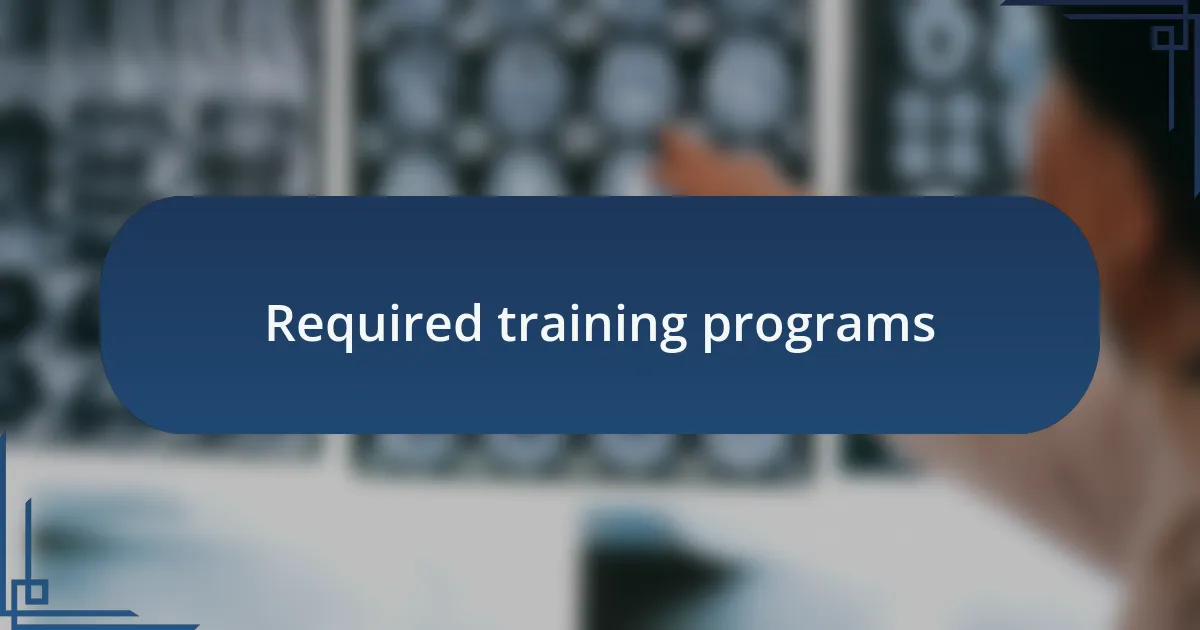
Required training programs
To enter the paramedic field, qualified training programs are a must. Most aspiring paramedics enroll in a community college or a technical school offering a dedicated curriculum in emergency medical services. I vividly remember sitting in a lecture hall, surrounded by passionate students who all shared the same goal—helping those in need. It was inspiring and cemented my belief that this was more than just a job; it was a calling.
Accredited paramedic programs typically culminate in a certification, but they also require a mix of theoretical knowledge and hands-on experience. This dual approach is vital, as I learned firsthand during countless simulations that no textbook can fully prepare you for the chaos of a real emergency. Can you imagine the weight of responsibility when every decision matters?
Apart from coursework, training programs also stress the importance of developing soft skills like communication and critical thinking. During my training, I often found myself reflecting on how vital these interpersonal skills were in high-pressure situations. Wouldn’t you agree that being able to comfort a patient while simultaneously assessing their condition can make all the difference? It was in those moments that I truly understood the heart of emergency medical services.
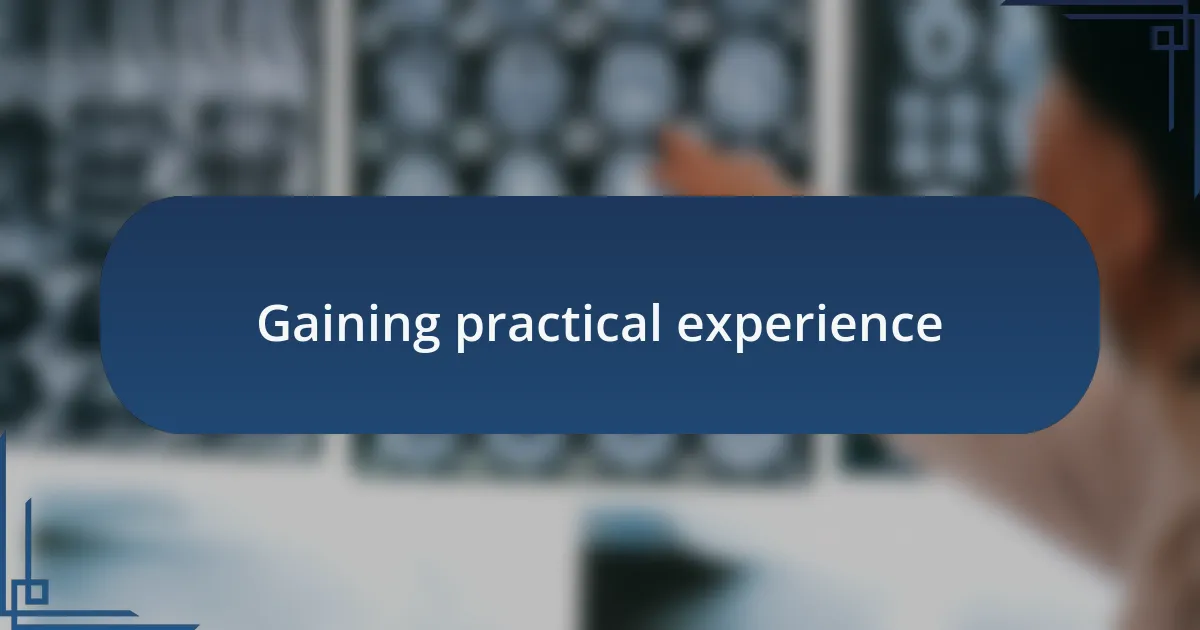
Gaining practical experience
Gaining practical experience is the heartbeat of paramedic training. I remember my first ride-along with an experienced paramedic; the rush of adrenaline was palpable. Each call we responded to was a lesson in real-time decision-making, forcing me to think quickly while maintaining a calm demeanor. Have you ever felt the weight of uncertainty in a high-stakes moment? It’s an experience that transforms your understanding of emergency care.
In the ambulances, I learned that no two emergencies are alike. I’ll never forget the time we were called to a multi-car accident. The chaotic scene forced me to push through my nerves and engage directly with victims while assisting my partner. Through those challenging moments, I realized that true learning happens outside of classrooms, where human lives depend on our actions. How can you measure the impact of, say, comforting a frightened child while managing an adult in critical condition?
Moreover, working alongside seasoned professionals revealed the nuances of patient care that textbooks simply skim over. I often found myself asking questions, and those who mentored me were generous with their knowledge. I still remember the rich discussions we had during quiet moments, dissecting our responses to various calls. It became clear to me that gaining practical experience is a continuous journey—one that’s rich with stories, lessons, and growth. Isn’t that what truly shapes us in any profession?

Navigating the certification process
Navigating the certification process can feel overwhelming, but it’s also an essential step toward a rewarding career in emergency medical services. When I first tackled the requirements, I was surprised by the sheer number of tests, practical labs, and field internships I needed to complete. Did I feel intimidated? Absolutely! Yet, embracing that challenge helped me sharpen my skills and understand the significance of each certification milestone.
I distinctly remember the day I sat for the National Registry exam. The pressure in the testing room was palpable, and I could see the faces of others mirroring my own anxiety. As I flipped through the questions, my mind flooded with memories of my training—each scenario I encountered reinforced my preparation. How often do we underestimate our abilities until we’re truly tested? Passing that exam was not just a personal victory; it felt like a collective triumph for everyone who had guided me along the way.
Once I secured my certification, the excitement was exhilarating but quickly mingled with a sense of responsibility. I vividly recall my first day on the job as a certified paramedic, and how it felt to wear that badge with pride. It meant carrying the weight of not just my training, but the hopes of the community I served. In what ways can we honor our oath to serve others? For me, it became a daily commitment to lifelong learning, evolution, and service—a journey that doesn’t end with certification, but rather begins anew.